- Administrator
- Albums and Singles
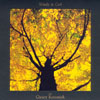 Ten different covers exist for this album, each of them photographs taken by Christy Romanick. Having seen all of them laid out on a table at the Brainwaves festival, for which this recording was made, I had trouble believing the liner notes when I read she used no digital means to compose these photos. The purity of the images matches perfectly the music Windy and Carl wrote for this album. The serenity of the autumn season suggested by the title is communicated perfectly in the first seconds and the frozen beauty of the recording, like Romanick's photos, is unique and stunning.
Ten different covers exist for this album, each of them photographs taken by Christy Romanick. Having seen all of them laid out on a table at the Brainwaves festival, for which this recording was made, I had trouble believing the liner notes when I read she used no digital means to compose these photos. The purity of the images matches perfectly the music Windy and Carl wrote for this album. The serenity of the autumn season suggested by the title is communicated perfectly in the first seconds and the frozen beauty of the recording, like Romanick's photos, is unique and stunning.
Blue Flea
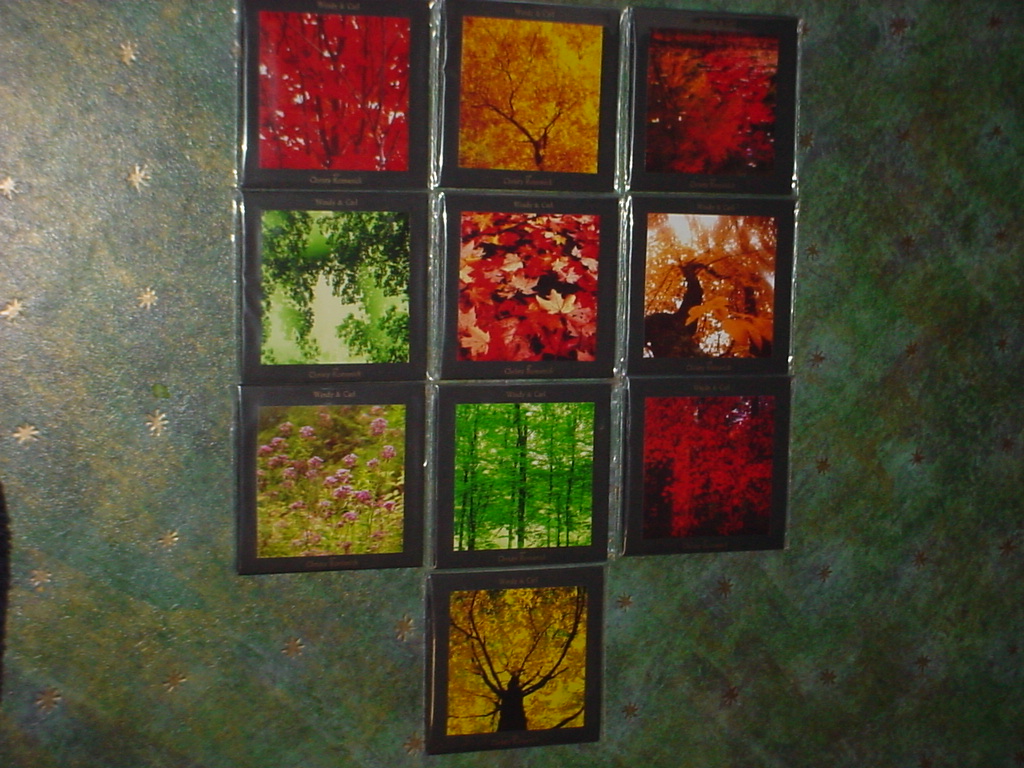 Akimatsuri is named after Japanese festivals held to celebrate the autumn season, typically with an emphasis on a good harvest. From what I understand these festivals are different depending on what region they're held in. It is appropriate, then, that Windy & Carl have decided to celebrate the autumn season with their own particular kind of music. The different photographs that are spread over the 500 copies of this recording are equally important, however. Akimatsuri is described as a collaboration with photographer Christy Romanick. The images are absolutely stunning. Anyone who attended Brainwaves can testify to the quality of Romanick's work as it was featured as a slideshow during Windy & Carl's performance, each of the photographs a perfect match for the solitude and peace this duo provided that day. This music harmonizes perfectly with thoughts of a cool breeze and the changing colors of leaves, the slow decay as time marches towards winter. It's a time of year when death is undeniably recognizable as equally sad and beautiful.
Akimatsuri is named after Japanese festivals held to celebrate the autumn season, typically with an emphasis on a good harvest. From what I understand these festivals are different depending on what region they're held in. It is appropriate, then, that Windy & Carl have decided to celebrate the autumn season with their own particular kind of music. The different photographs that are spread over the 500 copies of this recording are equally important, however. Akimatsuri is described as a collaboration with photographer Christy Romanick. The images are absolutely stunning. Anyone who attended Brainwaves can testify to the quality of Romanick's work as it was featured as a slideshow during Windy & Carl's performance, each of the photographs a perfect match for the solitude and peace this duo provided that day. This music harmonizes perfectly with thoughts of a cool breeze and the changing colors of leaves, the slow decay as time marches towards winter. It's a time of year when death is undeniably recognizable as equally sad and beautiful.
Divided into five parts, the album consists primarily in the slow building of steam. Easy drones made of organ or keyboard float on the edge of consciousness behind the warm fuzz of an electric guitar and the lazy strumming of strings. Approximately 11 minutes into the composition, an uneasy silence falls on the record before a glimmering guitar solo whispers its way through the music: it's perhaps the most noticeable moment on the album because it is so unexpected and majestic. The fact that the music had been working towards this inverted crescendo was not evident until the crescendo happened. Repeated listens make the tension that Windy and Carl slowly and meticulously built more evident, but the sudden beauty of that guitar solo stands out for me every time.
The album descends after this moment, reveling in the calm that follows so many excited moments. The patient strumming from the first half of the record returns and Akimatsuri slowly fades away into a haze of keyboards and humming guitars. The album is meant to be a celebration, as aforementioned, but the ending reminds me of the first snows of winter. Only certain places here in the states have had the chance to see those snows and the unearthly moan of sounds that populate the end of this record make that white scenery all the more missed. Whatever the end of the album is supposed to represent, there's little doubt in my mind that Akimatsuri is one of Windy and Carl's best recordings. The awe that their serene compositions inspire is amplified by the beauty of the packaging and the care these three artists took in presenting the package as a perfectly realized whole. The music and photographs are intimate enough, but when taken in together they seem like a gift meant for whoever is holding it and not like a product meant for consumption.
Anyone interested in Christy Romanick's work should visit her website at www.space30a.com. The site is currently undergoing some work, but her portfolio has been made available there and some photographs used for both Akimatsuri and the Windy and Carl performance at Brainwaves can be found in that portfolio.
samples:
Read More
- Administrator
- Albums and Singles
Read More
- Administrator
- Albums and Singles
 Like the title implies, the songs on this mostly electronic compilation share a similar chilly aesthetic. They also share a tendency to stray into dark territory, making this collection an excellent soundtrack for an eerie winter’s night.
Like the title implies, the songs on this mostly electronic compilation share a similar chilly aesthetic. They also share a tendency to stray into dark territory, making this collection an excellent soundtrack for an eerie winter’s night.
Haunted Sound Laboratory’s "Ghost in the Blood (live)" starts things off appropriately enough with a simple heartbeat and heavy breathing. Various rattles and drones venture forth from the shadows only to recede from whence they came. It’s hard to guess where the sound will come from next, and it’s this unpredictability that makes it an ideal opener on a compilation of left turns. The album builds intensity with a few beat-oriented songs, including Danny Hyde’s intriguing remix of Mink’s "Ride," before heading for starker territory with tracks by the likes of Black Sun Productions, a Mort Douce remix by Tactile, and a pensive collaboration between Sid Redlin and Gregory Rapp. The album veers again, this time brightening somewhat with more beats and a greater emphasis on vocals than previously. Kuxaan-Sum turns in some haunting whispers on "La Mentor De’Morte" before giving way to NOT’s rocking "To Taka Gra." The latter seems a little out of place amid so many electronic acts, yet it’s a decent track and doesn’t derail the mood completely. The album’s most abrasive song comes from Bad Wolf, whose "Die Ostara Satan America" is composed of various rhythmic static, electronic squeals, and industrial groans. The last few songs head in a quieter direction, beginning with 3z13’s bubbly "They Don’t Know" and ending with "Searching for Life in the Ethane Oceans" by The Insektys Isotope, probably the compilation’s coldest, sparsest track and its perfect ending.
While there may be a couple of lulls, there are no outright duds to be found. The sequencing plays to the strengths of the individual songs and changes pace at all the right times to keep the listener engaged as it unfolds along every stage, with enough variation to make this album a rewarding, compelling experience.
samples:
- Haunted Sound Laboratory – Ghost in the Blood (Live)
- Bad Wolf – Die Ostara Satan America
- The Insektys Isotope – Searching for Life in the Ethane Oceans
 
Read More
- Administrator
- Albums and Singles
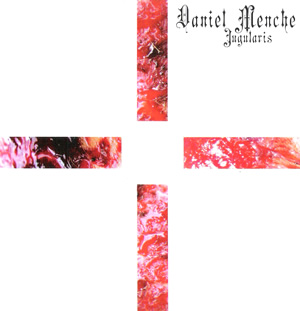 Through the album’s vein-like title and the glorious red tissue of this disc’s gatefold, Menche is being quite insistent about the subject matter of Jugularis; the human heart and its physical functions. Pumping through a myriad of veins and arteries, this album is the sound of blood propelled around the body by the steady drive of this vital organ. Except instead of the familiar and secure pulse of its beat, we are invited to hear the mini-rhythms of blood vessels driving and populating these three untitled behemoth sized tracks.
Through the album’s vein-like title and the glorious red tissue of this disc’s gatefold, Menche is being quite insistent about the subject matter of Jugularis; the human heart and its physical functions. Pumping through a myriad of veins and arteries, this album is the sound of blood propelled around the body by the steady drive of this vital organ. Except instead of the familiar and secure pulse of its beat, we are invited to hear the mini-rhythms of blood vessels driving and populating these three untitled behemoth sized tracks.
Sounds travel purposefully past the listener on their way to some urgent destination, dipping in and out of coherence before rushing and splitting like waves. Menche avoids the Puréed internal and organic squelch and splatter route, instead moulding sounds into a subtler blending of power electronics (not an oxymoron for Menche) and pulses. An exemplar of rhythm manipulation and processing, Menche’s exploration of sound here consciously avoids the slip into full-throttle abuse. "Jugularis Three" is the heaviest piece with ball bearing raindrops creating noisy little blood vessel stuck grooves. The insect chatter pitter-patter on this, the album’s finale, is the most focused, pummelling a path into the blood-sodden ground. As focused as Jugularis is on its relentless pounding, it manages to also move in a less obviously percussive way.
"Jugularis Two" slurs large sections of drum work into a drenched screed of sound; these passages more closely resemble the passing of treacly covered comets rather than any digital process. While the beats are the main focus of the album, and take up a good 90% of the sounds, there is a restrained use of tones beneath some of the throbbing. From heavier descending moods to more slight overlapping drone, these ingredients also create changing patterns. At the more burdened end they can buzz like swarms of shaking rivets, while at the other end they slow into accordion like waves.
The off-kilter primitive beats of the album are forever settling and shifting in their patterns, overlapping like live players moving into and out of the foreground through Menche’s filtered digital vision. These tiny structured blueprints move through channels inside a larger breathing space, bringing a slight echoic feel to these sections. While the album is undoubtedly about flesh it never moves from its detached examination of sounds into lasciviousness. With Jugularis Menche has become almost impassive in his dealings with the human heart, his touch as black as any noise artist.
samples:
 
Read More
- Administrator
- Albums and Singles
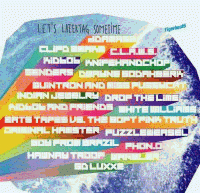 The title of this new Tigerbeat 6 sampler doubles as a good pick-up line to use at the next DragonCon. It features 20 tracks drawn from the current stable of TB6 talent; familiar faces like Kid606 and Knifehandchop rubbing shoulders with up-and-comers such as Drop the Lime, Phon.O and Eats Tapes. I'm happy to report that the TB6 bratty punk-tronica aesthetic is in full, frenetic effect.
The title of this new Tigerbeat 6 sampler doubles as a good pick-up line to use at the next DragonCon. It features 20 tracks drawn from the current stable of TB6 talent; familiar faces like Kid606 and Knifehandchop rubbing shoulders with up-and-comers such as Drop the Lime, Phon.O and Eats Tapes. I'm happy to report that the TB6 bratty punk-tronica aesthetic is in full, frenetic effect.
Quintron and Miss Pussycat bounce back from the double bitch-slap of Katrina and Rita with "Swamp Buggy Badass," all snarling rockabilly swagger and deep-fried Southern decadence filtered through sleazy techno throb. Play this track side-to-side with Alan Vega's "Jukebox Baby" and tell me which one you like better. It might be too close to call. Suddenly and unceremoniously, the mix travels from the bayou to the teeming metropolis of Berlin, soundtracked by Phon.O's throwaway bit of bottom-heavy crunk-tech "Dumpsta Railin'," fun but unsubstantive. Of course, if you came here looking for substance, you were barking up the wrong tree in any case. The same goes for Kid606's "Let It Rock" from last year's Pretty Girls Make Raves, a study in glittering superficialities, a kaleidescope of club-friendly big-ups and shoutouts rolled into one big, hyperactive beat-propelled mess. G.D. Luxxe injects some robot funk into the mix with "Gift," a hard-edged technopop tune that rocks, like, pretty hard.
A few acts on this comp attempt to problematize the usual association of TB6 with bedroom electronica and trashy techno, bands like Clipd Beaks, Genders and Boy From Brazil who bring the rock, complete with real instruments and everything. Clipd Beaks seem really promising with "Nuclear Arab," an acid-damaged wall of urgent noise-rock that locates audible signifiers of protest and political resistance in the same ballpark as This Heat and early Section 25. I saw Genders open for Adult. last year, and was underwhelmed, but their track here ("Apes") is actually pretty neato, atmospheric psych-pop hidden behind layers of murky reverb and obscured by willfully perverse mixing strategies. Boy From Brazil's "Pocket Rocket Queen" steals a page from Quintron's book, a snotty, sexually confrontational electro-rock paean to the vibrator, delivered with a heavy dose of rockabilly attitude, as well as the liberal use of that late-50s Gene Vincent vocal echo. Kid606's other contribution to the comp, credited to "Kid606 and Friends," is a full-on rock song as well, with what sounds like live drums and guitars. "We Need to Make a Change" is both a political rallying cry and a party anthem, with an infectious bassline and a singalong chorus. Who are these "friends" exactly?
As is expected, this sampler also contains a full complement of instantly disposable chunks of ironic nonsense. I'm thinking here of Hawnay Troof's "Man On My Back," which is an angry call-and-response rap delivered a cappella over weird chugging sounds, followed by 25 seconds of silence (a mastering error?). It's pointless, but maybe that's the point. "Claws Theme (Edit)" by C.L.A.W.S. is dumb and damned proud of it, and that's got to count for something. Original Hamster manages to combine the agitating repetition of Reggaeton with early-90s diva-house, tying it all together with chopped up vocal samples and squishy acid squiggles, and it somehow works. Knifehandchop chimes in with an exaggerated wet dream of deconstructed, chopped and screwed robotripped hiphop that reimagines the scene in extrapolated dystopian form. It's crunk as hell, but also fucking terrifying.
Eats Tapes samples the "Uh -huh" from Soft Pink Truth's dionysian cover of Nervous Gender's "Confession" (also known as "Jesus was a cocksucking Jew from Galilee") to create a bouyant party jam that gradually snowballs into an dizzying cut-up techno piece that made me queasy with its frenetic invention. Indian Jewelry's "Emptyhanded" persists on the noisier end of mannered garage rock, and for no reason that is immediately apparent to me, is one of my favorite tracks on the comp. Drop the Lime's "Butterscotch" sounds like a less repellant version of Gold Chains: fat synth lines, bassy throbs and testosterone-amped vocal refrains. It's far too short, but it's lovely while it's there. Filler tracks by dDamage, Warbler and Puzzleweasel hardly warrant mention; it just wouldn't be a Tigerbeat sampler without a few head-scratching moments of sarcastically shitty, spastic, post-IDM Nintendo-esque trash.
Rest assured that Tigerbeat 6 is keeping it real: real electic, weird and fun.
samples:
- Quintron and Miss Pussycat - Swamp Buggy Badass
- Eats Tapes vs. Soft Pink Truth - Uh Huh
- The Genders - Apes
Read More
- Administrator
- Albums and Singles
 Normally live albums fail to capture the magic of being at the show, instead they end up as souvenirs for those who were there or extra materials for completists to collect like archaeological specimens. However, this CD documenting a meeting of two legends of minimalism is a beautiful recording that seems to capture much of the magic that went on that night. Maybe those who were there would contest this statement but An Aural Symbiotic Mystery is still a stunning composition.
Normally live albums fail to capture the magic of being at the show, instead they end up as souvenirs for those who were there or extra materials for completists to collect like archaeological specimens. However, this CD documenting a meeting of two legends of minimalism is a beautiful recording that seems to capture much of the magic that went on that night. Maybe those who were there would contest this statement but An Aural Symbiotic Mystery is still a stunning composition.
Sub Rosa
Performed the day Luc Ferrari was cremated, this improvised set by two of the best composers of the 20th century is both a fitting epitaph to the music from the last century and prayer to further adventures and explorations of sound over the next 100 years. Palestine wanted the performance to celebrate those who were alive; his words apply both to Conrad and himself as well as the next generation of composers and artists. The resulting piece is a joyous celebration of musical creativity that encapsulates the utter skill and proficiency of both men.
The piece itself is, as expected, just over 18 minutes of sublime minimalism; Palestine restricts himself mainly to a delicate set of variations of a short piano refrain which sounds like trickling water. Conrad extends violin drones from the beginning of time to the end of time, giving a real sense of eternal music. As the performance runs its course, there is a shift in feelings and sounds, at times Conrad cuts through the mix like a chainsaw. Palestine keeps right up with him proving the title especially apt; the two artists (despite not being in contact for over 30 years) connect in a way that is almost unnatural. The music is not just a static drone with repeated piano phrases by any stretch of the imagination; changes in instruments, addition of vocals and variations in both intensity and delivery make the piece a joy to listen to. There is so much going on here that it is easy to miss out on many elements of the sound even after quite a few repeated listenings.
An Aural Symbiotic Mystery shows two masters in full flight. Before I spun the disc I knew exactly what it would sound like but the sheer level of brilliance came as a shock. It is not just the musical content of the performance but the energy that is moving back and forth between Palestine and Conrad. It is hard to convey just how well the pair click together and luckily the power of their performance is captured on the disc. I am not a spiritual person but this kind of power and passion can move me to a place that is almost religious. An Aural Symbiotic Mystery came just a little too late for me to include it in my best of 2006 list but it deserves to be there.
samples:
Read More
- Matthew Amundsen
- Albums and Singles
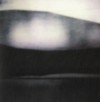 The music is relentless from the beginning, immersing me in an acoustic world born of various detritus scavenged from sewers, dimly lit alleyways, or heaps of litter. It seems that anything found in these locales is fair game for making rhythm, from trashcans to generators and barely functional machine parts. Conventional drums appear in some places, yet their role is to punctuate the chaos more than to provide a steady beat around which the other noises rally. Occasionally, one of the denizens disturbed by this din rises from its lair to lament the pillaging or to frighten the intruders away. The epic closer "Compound My Eyes" is itself a test in endurance at over 40 minutes in length, and separates the dilettantes from the devotional. Because each song uses such similar compositional elements, after a while the album begins to sound like variations of a theme, but oh, what an intriguing and addictive theme it is.
The music is relentless from the beginning, immersing me in an acoustic world born of various detritus scavenged from sewers, dimly lit alleyways, or heaps of litter. It seems that anything found in these locales is fair game for making rhythm, from trashcans to generators and barely functional machine parts. Conventional drums appear in some places, yet their role is to punctuate the chaos more than to provide a steady beat around which the other noises rally. Occasionally, one of the denizens disturbed by this din rises from its lair to lament the pillaging or to frighten the intruders away. The epic closer "Compound My Eyes" is itself a test in endurance at over 40 minutes in length, and separates the dilettantes from the devotional. Because each song uses such similar compositional elements, after a while the album begins to sound like variations of a theme, but oh, what an intriguing and addictive theme it is.
Read More
- Administrator
- Albums and Singles
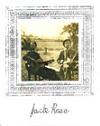 The album is packaged in a gorgeous sleeve made of white embossed card with a beautiful sepia-toned photo of Rose's musician ancestors (the whole thing smells of bubblegum, not intentional I am sure but pleasant nonetheless). The old time vibe from the photo sets the mood for the album as Rose fingerpicks and slides his way all over his guitar. His playing is infused heavily with bluegrass and blues techniques and styles.
The album is packaged in a gorgeous sleeve made of white embossed card with a beautiful sepia-toned photo of Rose's musician ancestors (the whole thing smells of bubblegum, not intentional I am sure but pleasant nonetheless). The old time vibe from the photo sets the mood for the album as Rose fingerpicks and slides his way all over his guitar. His playing is infused heavily with bluegrass and blues techniques and styles.
A description like that would normally turn me off as if there is one thing that has been done to death over the last 80 years is the blues but Rose’s playing make these tired old scales sound fresher than usual.The pieces on this self-titled album all are brimming with warmth and brightness; they sound like they should be accompanied by a video-montage of Appalachian countryside and people lazing on verandas with battered old guitars and farm equipment surrounding them (or maybe I am losing the run of myself here). Rose’s playing is as clean as driven snow and full of expression. Occasionally a touch of reverb is added, such as on “St. Louis Blues,” to add a little color to his already polychromatic playing.
Most of the tracks are around the 3-4 minute mark, which make for perfect little bursts of music. I found it nigh on impossible not to tap my toe to most of them. “Gage Blues” in particular gets my dancing bug all riled up. This is followed by the epic "Spirits in the House," which sees Rose slowing down and slowly building up a heady and lovely mood. This evokes a much more southern feeling compared to the other pieces, a romantic and mythical vision of Louisiana complete with thick heat and humidity. This wonderful piece makes it well worth tracking down this album, the other pieces are good but I found they have a shorter shelf life than this one which I could listen to all day. The way it simmers and bubbles for 13 glorious minutes is sublime.
This album may not be of much interest to someone who cannot stand bluegrass, blues or other roots styles. Although in saying that, I thought myself jaded with all things slide guitar related but I found it to be captivating. Such exemplary guitar playing both makes me jealous that I cannot do similar things with my guitar and reminds me that the vast majority of guitarists do not play the guitar but simply pose with power chords.
samples:
Read More
- Administrator
- Albums and Singles
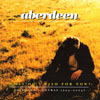 It's winter, and while it's been a rather warm one, it's still been rainy and of course, dark. As I look around the piles of recent and forthcoming releases and loads of mopey bedroom-made electronica demos in boxes I'll never open, it's painfully hard to find solace from dreariness. Thankfully I've got some time to catch up on Aberdeen.
It's winter, and while it's been a rather warm one, it's still been rainy and of course, dark. As I look around the piles of recent and forthcoming releases and loads of mopey bedroom-made electronica demos in boxes I'll never open, it's painfully hard to find solace from dreariness. Thankfully I've got some time to catch up on Aberdeen.
Aberdeen's one of the most unsuspecting groups to get a collection like this as they only ever had one album in the span of about 10 years of existence. Although they were born in the shoegaze/dreampop world nobody could ever accuse Aberdeen of being dreary. Even if the songs are about bitches stealing boyfriends, fear, or hatred, the music was always bright and uplifting, but then this twee thing happened.
History won't regard Beth Arzy as one of her generation's voices nor will they regard John Girgus as a guitar god, but from their demo-sounding first few songs with the drum machine backing through the recordings from their only album, 2002's Homesick and Happy to Be Here, there is always something charming and inviting. The collection isn't without its weak spots, however.
The best stuff is almost always the simplest and where they shine are on songs where they keep easy melodies and put the effects way up, like the rhythmic echoing of "Fireworks" from 1995 or the bouncy "Snapdragon" from the same year (but different singles). "The Boy Has Gone Away" was a single from Homesick and is featured here with its two non-LP tracks and while I love both Girus and Arzy's vocals together on "Miss You While You're Gone," I'm kind of bugged by the seemingly vocal posturing of the Girgus-dominated "Emma's House" and "Florida."
Their entire career of recorded material can be obtained with this disc and Homesick. While I'm not rushing out to get that nor pursue more Trembling Blue Stars (of whom Arzy now sings for) Aberdeen songs do come in handy on mixes or on radio shows when there's that need for an extra bit of brightness.
samples:
Read More
- Matthew Amundsen
- Albums and Singles
 Although the song is half an hour long, it has three movements distinct enough to be separate tracks. The first, “Invisible Fire,” is a quiet exploration grounded by the guitar while the other instruments dart forth on their own. It heads into abstract territory for several minutes, striking bargains with interstellar entities, until brought back by the monologue of a disembodied voice. The next section, “The Rebis,” finds the group turning up the amplifiers, returning the drums to a steady beat, and adding a searing violin to complement this psychedelic jam. “Latona” is the most sedate part of the album, with its acoustic guitars, tabla, and flute providing an upbeat ending to this mutating piece and at last returning the group’s feet to the ground. While this album isn’t terribly different from other recordings by the band, its flowing sections contain plenty enough within to keep me entranced.
Although the song is half an hour long, it has three movements distinct enough to be separate tracks. The first, “Invisible Fire,” is a quiet exploration grounded by the guitar while the other instruments dart forth on their own. It heads into abstract territory for several minutes, striking bargains with interstellar entities, until brought back by the monologue of a disembodied voice. The next section, “The Rebis,” finds the group turning up the amplifiers, returning the drums to a steady beat, and adding a searing violin to complement this psychedelic jam. “Latona” is the most sedate part of the album, with its acoustic guitars, tabla, and flute providing an upbeat ending to this mutating piece and at last returning the group’s feet to the ground. While this album isn’t terribly different from other recordings by the band, its flowing sections contain plenty enough within to keep me entranced.
Read More
- Matthew Amundsen
- Albums and Singles
While it starts off intriguingly enough with quiet, ominous drones, every time the band seems to up the ante, nothing much develops. Some snippets of delayed feedback or ringing bells appear every now and then, but they don’t signify any real changes to the music. When other changes do occur, they’re fairly harmless and usually disappear before long, leaving the drone that provides much of the track’s foundation. The song achieves its greatest drama after about 24 minutes, but then spends the rest of the time with a rumbling that fades for so long and gets so quiet that it’s easy to forget that the disc is still playing. Nothing about this recording is bad, per se, but at times it feels like the band’s phoning it in, that this is merely experimentation by the numbers. It’s less structured than their other albums, but not different enough from other experimental work to recommend it. In the end, it’s almost negligible if only because it’s so ordinary.
Read More

